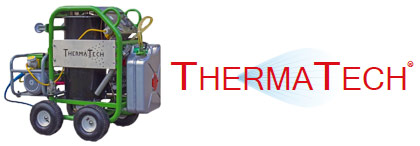Cleaning the Royal Artillery Memorial
The Royal Artillery Memorial is a large stone war memorial at Hyde Park Corner, London.
Commissioned by the Royal Artillery War Commemoration Fund in 1921 to commemorate the 49,000 British soldiers in the Royal Regiment of Artillery who lost their lives in the First World War.
Atop a large, tall plinth of Portland stone sits a stone sculpture of an Ordnance BL 9.2 inch howitzer, a heavy shell-firing cannon introduced in 1914 and used by the Royal Artillery during the war. The sides of the plinth are further decorated with intricate stone carvings depicting scenes of the members of the Regiment in action. Bronze statues stand upon each of the four sides of the wider base of the plinth. The Memorial is a Grade I listed building whose care and maintenance is the responsibility of English Heritage.
The Problem
The Royal Artillery Memorial suffers from a number of inter-related problems. It is set in a very polluted environment with high levels of exhaust emissions, it is shaded by two large plane trees, and its design means that rainwater tends to be retained on the horizontal areas of the memorial. As a result, it has suffered from algal growth as well as erosion of the fine relief carvings. The maintenance used to be carried out regularly, with the stonework cleaned every few months using high-pressure water.
Unfortunately, this had the effect of opening up the pores of the stone even more and making colonisation by algae even easier. In order to reduce the damage, a comprehensive programme of investigation was carried out to try to find a more suitable longer-term solution.
The Problem
The Royal Artillery Memorial suffers from a number of inter-related problems. It is set in a very polluted environment with high levels of exhaust emissions, it is shaded by two large plane trees, and its design means that rainwater tends to be retained on the horizontal areas of the memorial. As a result, it has suffered from algal growth as well as erosion of the fine relief carvings. The maintenance used to be carried out regularly, with the stonework cleaned every few months using high-pressure water.
Unfortunately, this had the effect of opening up the pores of the stone even more and making colonisation by algae even easier. In order to reduce the damage, a comprehensive programme of investigation was carried out to try to find a more suitable longer-term solution.
The Solution
Restorative Techniques ThermaTech was specified as an effective, non-destructive cleaning method. The machine was used at a temperature of 150°C with a 45° nozzle. This had the desired effect of removing the algae and discoloration that had built up. The stone underwent further restoration treatments.
Although the Royal Artillery Memorial still suffers from the same problems, cleaning is now needed less often than before, and the ThermaTech® has been specified for all future maintenance. This will help it to be preserved for continued remembrance in the future.
The Solution
Restorative Techniques ThermaTech was specified as an effective, non-destructive cleaning method. The machine was used at a temperature of 150°C with a 45° nozzle. This had the desired effect of removing the algae and discoloration that had built up. The stone underwent further restoration treatments.
Although the Royal Artillery Memorial still suffers from the same problems, cleaning is now needed less often than before, and the ThermaTech® has been specified for all future maintenance. This will help it to be preserved for continued remembrance in the future.






